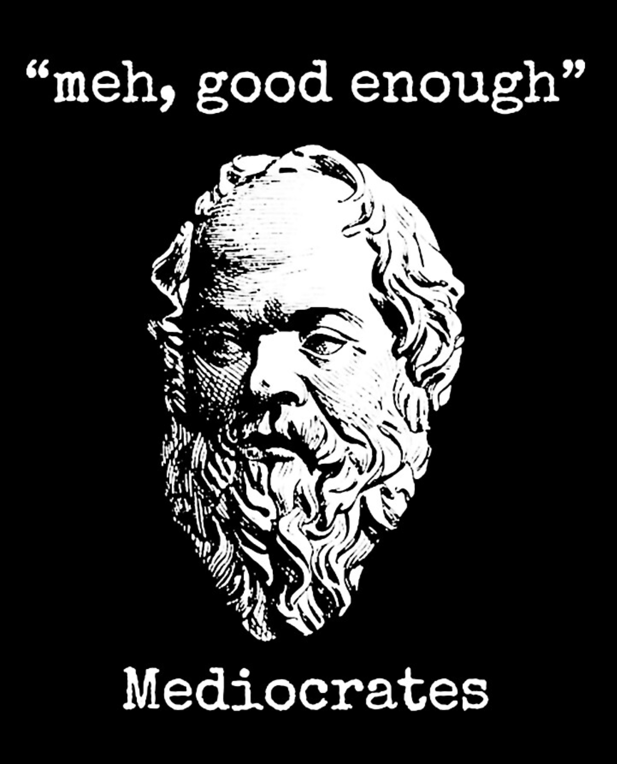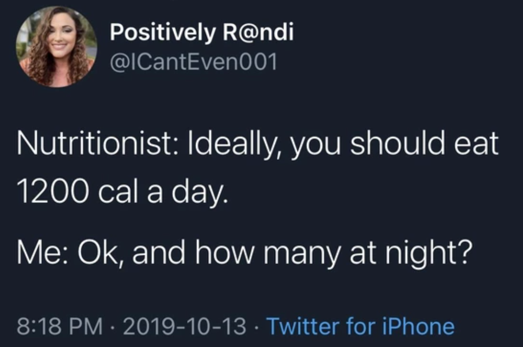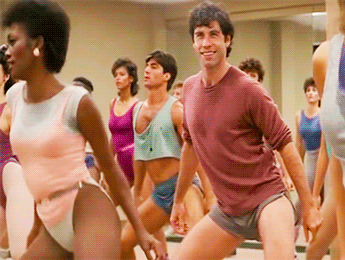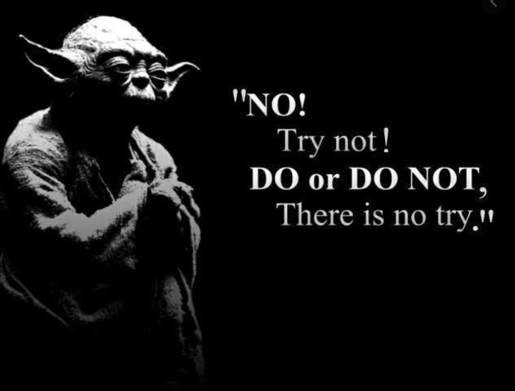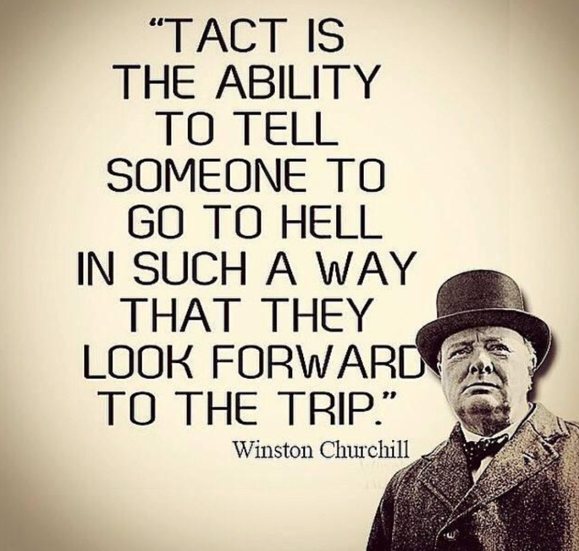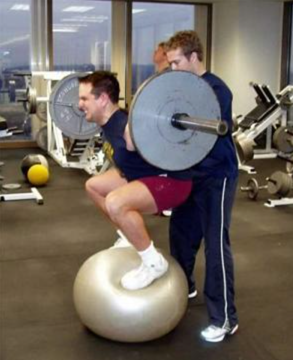Subsections of Community
Introduction
What do we mean by “community”? It has become a lost word in the modern age of social media. But that’s actually why I included it in this challenge. Digital communication can’t replace human interaction.
First, most of us aren’t as good communicators as we think. Combine that with the fact that most communication comes from body language and tone of voice, and we’re limiting our ability to communicate.
On top of that, let’s add some controversial topics…
It’s a recipe for failure.
So, over the next few days, we’ll cover some topics that remind us what it means to be a community member, hopefully, learn some new skills, and maybe break out some older ones that we haven’t used in a while.
Showing Up
All of us have a shared common interest in CrossFit. It’s how we know each other and have found additional common bonds through that. Stepping back for a minute, though, why did we start doing CrossFit?
To get into shape. To improve our fitness.
So CrossFit is great for that, right? Sort of, but CrossFit’s not responsible for the success.
The reason CrossFit works has absolutely nothing to do with Murph, Fran, squat snatches, burpees, or Greg Glassman.
It’s not about the workout.
You show up to class. We all do the same workout. We all suffer together. Suffering together forms bonds of friendship. So now, when you skip class, you feel guilty. Your friends are in the gym suffering, and you’re not.
Guilt forces you to go to the gym.
Going to the gym leads to consistency.
Consistency leads to results.
We could be doing Jane Fonda workouts in the gym, and it wouldn’t matter. The results would be the same.
Social Media
Social media tools like Facebook, Instagram, Snapchat, and others have been a great way to reconnect with old acquaintances, stay in touch with friends both near and far, discover topics of interest, and join pyramid schemes. It hasn’t come without a cost, though. I’ve spent a fair portion of my career interacting with this industry, and we’re learning that the cost is much higher than bargained for.
The downside is that these tools sandbox us into beliefs that do not reflect reality. They are designed to show us what we are looking for, which provides a false sense of reality. Many like to vilify the creators of these tools, but that is not the case. It’s the classic story of death by 1,000 cuts. Running a company like Facebook requires millions of dollars per month to power the hundreds of thousands of servers throughout the world that make it work. TL;DR- those servers aren’t free. How much are you paying for their service?
If you aren’t paying for it, you’re the product.
A key point to understand is how these companies make money (and must make money, or they go out of business). As you scroll through your timeline, you see a mix of posts from your friends and posts from advertisers. The advertisers pay to put their posts on your timeline; your friends don’t. The standard metric determining success is the amount of time you spend in the app. More time in the app = more ads = more revenue, so the algorithm is constantly being tweaked to keep you engaged with the app. Everything you do within the app is measured. If you pause on a post while scrolling, it’s measured. If you scroll back up to a post, it’s measured. Even if it’s something you disagree with. These metrics are combined to find and display similar posts to keep you engaged.
This becomes problematic when you see a post that really pisses you off. This is common on social media, where people can say things they wouldn’t say in real life.
Everyone has a plan until they get punched in the face. – Mike Tyson
You pause. You read it. You vent your frustration about it. God forbid if you comment on it. Now your timeline rapidly fills up with similar stories. You see one story after another on this topic. With this many stories on the subject, this must be a huge problem.
Not necessarily.
It’s just the result of a computer algorithm mimicking the behaviors you’ve trained it to perform. Unfortunately, this has already impacted your views and beliefs. You’ve now seen sufficient evidence that this thing must be true. It impacts your mood, conversations with friends, and actions in the real world. The damage has been done.
You can’t unring a bell. – Larry Goins
So how do you combat this?
The first step is to restrict your time spent on social media. Use it as needed, but no more.
Second, understand that social media is not reality. Remember the National Enquirer tabloids from decades past? Yeah- that’s exactly how much credibility things you see on social media deserve. Rank anything you read right next to Bigfoot spotted riding the Lochness Monster in the Wal Mart parking lot.
Third, rule #2 applies to all sources of data. That includes posts from organizations that you would assume are credible. The more credibility you give them, the less they likely deserve it. Remember, they are all in the business of luring you to their website to show you ads that make them money. Truth is not the metric; the number of clicks is.
Finally, understand it’s not a conspiracy. It is a platform that has spiraled out of control because we didn’t understand the implications of it. Although we’ve seen the full scope of our actions, unraveling it isn’t as easy as we’d hoped. Entire companies and, by proxy, the livelihood of millions of families employed by these companies now depend on the revenue generated.
Safeguard your mind and the information you allow into it. Exercise the same principle you use to safeguard your home, car, and family. If this topic interests you and you’d like to learn more about it, Netflix has a great documentary on the subject [here], or you can talk to me about it… just not on social media. 🤣
Today’s Tasks
Don’t forget to complete today’s tasks for the challenge.
- Drink 1 gallon of water
- Workout for 45 minutes
- Read ten pages from your book
- Stick to your meal plan
- Meditate
- Hit that cold shower, there are still a lot of boxes to check there, and the weather (along with the water) is only getting colder!
Once completed, head to the tracking site and mark them as completed to track your progress for the challenge. Tomorrow’s topic: No.One.Cares.
No One Cares
How much weight did so-and-so put on the bar?
What’s their PR?
Who Rx’d the WOD?
It doesn’t matter.
Sometimes we’re tempted to measure ourselves by others. This applies not only to our workouts but to other areas of our life as well. We define success by the achievements of others. While that’s ok when looking to see what may be possible, it’s important not to fall into the trap of thinking that others judge us by the same criteria. Here’s the magic secret:
No one cares.
Most people aren’t even looking. They are focused only on their own efforts and battling their own demons. That’s not to say everyone is self-absorbed. Sure, some people are, but that’s not our problem. The problem is when we beat ourselves up over metrics that don’t matter. It’s almost impossible to judge yourself based on the accomplishments of others because we all start at different points.
If two people became millionaires, but one started with $999,999, it’s not a fair comparison. When setting standards for yourself, use universal metrics: did you give it your all? Were your actions just and true? Was it better than yesterday, even by just 1%?
Just that you do the right thing. The rest doesn’t matter. – Marcus Aurelius
When you stop comparing yourself to others, you will find a great weight has been lifted off your shoulders. With this weight removal, you find freedom, flexibility, and control. It frees you to the point where you can finally see what you are capable of.
Today’s Tasks
Don’t forget to complete today’s tasks for the challenge.
- Drink 1 gallon of water
- Workout for 45 minutes
- Read ten pages from your book
- Stick to your meal plan
- Meditate
- Hit that cold shower if you haven’t yet!
Once completed, head to the tracking site and mark them as completed to track your progress for the challenge.
Legacy
How much time and effort do you put into building your legacy, whether large or small? Setting aside money for your children’s future? Preparing them for life after your death? Working long hours to ensure your business remains long after you cease to?
How rewarding is it for Thomas Edison that on this day in 1879, he demonstrated the first electric lamp, which has changed our lives dramatically since? It’s not.
He’s dead.
He has no idea, and neither will you. Instead, how rewarding is it to call your neighbor for coffee or meet with friends for dinner? How rewarding would it be to take the afternoon off to help clean up the Parks and Rec center, make sure your neighbors have a ride to the polls on election day, or organize a family dinner with no cell phones, tablets, or tv? It’s rewarding right now, in the present. And really, the present is all there is.
Memento mori. You could leave this life right now.
Write Your Own Obituary
Most laugh when I tell them to do this. “That’s crazy, bro. It’s written by someone else after you die.”
Yeah. Most of the time it is, because the person who died didn’t do it. But think about this: you just died and now you’re pinning the responsibility of writing your own obituary on those currently struggling with losing you (hopefully)?
There’s another reason to write your own obituary too: it’s your last chance to leave everyone your final thoughts. It’s an opportunity to tell those you love how much they meant to you.
It’s one last chance for you to step up as a leader and tell them that it’s going to be ok.
My obituary is in a sealed envelope in our home, to be opened if I die. I also have a digital copy on my laptop and a reminder each year to review it. Sometimes there are new things I’d like to say. Sometimes there are things that should be left unsaid.
The final thing I’ll say on it is this: it’s for you, too. Sitting down to write it is a sobering experience. Were you the person you wanted to be? If not, what better time to find out than while you’re still alive and can do something about it?
Today’s Tasks
Don’t forget to complete today’s tasks for the challenge.
- Drink 1 gallon of water
- Workout for 45 minutes
- Read ten pages from your book
- Stick to your meal plan
- Meditate
- Hit that cold shower if you haven’t yet!
- Write your obituary
Once completed, head to the tracking site and mark them as completed to track your progress for the challenge.
Being A Member Of Your Community
Show me your friends, and I’ll show you your future. –Unknown
Contributing to your local community is more challenging than at any other time in history. Long commutes, longer working hours, extracurricular activities for the kids, and a dopamine-fueled addiction to social media leave little time to wander out into the front yard to chat with the neighbors. Added challenges in 2020 have magnified that problem.
For all the things that modern, digitally connected communities provide, what stands out most is our need for close-knit, human interaction. We are a tribal species; pop-up notifications and 👍 buttons can’t replace 200,000 years of evolution in a decade. One thing that stands out in my mind is the loss of knowledge transfer from older generations to younger ones. It’s hard to get through to kids; they don’t seem to listen. They’ve always got their heads buried in some electronic device.
Oddly though, my grandparents said the same of me and my generation. We were always watching TV, listening to the radio, or out with friends… doing who knows what 🤷♂️. While I may not have spent much time with my grandparents, the time seems to have affected me. My grandpa always had a story to tell while working in the fields, repairing fences, hauling hay, or cutting firewood. At the time, it seemed as if he was passing the time, but decades later, as I encountered obstacles, some thought would enter my mind related to a story he had once told me about his life. It then hit me…
“It was never a random story at all. He was preparing me for this moment.”
One of the most memorable things I learned from him is failure is not an option. He never said those words but lived it through his actions. It came up in a conversation recently with a CEO I advise. He wanted to master all the disciplines of building a technology company: people management, growth, finances, debt, marketing, sales, and the ever-changing technology landscape.
I told him this story: as a kid on a farm, we faced many obstacles: drought could crush our crops, cold weather could take our livestock, and equipment could break. If any of those obstacles gained the upper hand, it could impact our ability to survive on a farm and feed the family. No grass = no hay = no feed for the cattle = cattle dying = no cattle to sell = no money = no food.
Many times I remember our tractor breaking down.
“What’s wrong with the tractor?”
“It’s broken.”
“What’s broken?”
“Don’t know.”
“What are we gonna do?”
“Fix it.”
That was his mentality. There were always two options in his world: solve the problem or walk into the house and tell the family that there would be no dinner tonight.
So his problem-solving skills shaped my problem-solving skills, which in turn have shaped others’ problem-solving skills.
I think that’s how a community works. It doesn’t have to be formal, organized, or planned. It just has to be human to human. The objective is to share knowledge, which means sharing your failures and what you learned from them. No one sees you fail on social media, but that’s not the reality. And it’s not helpful to others. It’s in the failure where the learning happens, and others can learn from your failures too, but only if you share them.
A Beginner's Mindset
Think back to when you learned something new for the first time, for example, doing a back squat. You likely had many questions:
Where does the bar go?
Where should your feet be?
What do you do with your hands?
How low is “below parallel”? (Along with the feeling that it is much lower than you thought it was)
But now, after having done back squats for a while, you don’t put as much thought into those things, and you do them automatically. The key point here is that once you are no longer a beginner, you forget what it was like initially. This comes into play when trying to share an experience with someone for the first time: you’ve forgotten what it looks like from their point of view and, as a result, skip over things foreign to them.
I’ve created hundreds of videos teaching people how to write code. One of the things that made those videos successful was capturing that beginner’s mindset. The scripts for many of my videos were written as I learned that particular coding language for the first time, resulting in capturing the questions I had as a beginner. Doing so made sure that I answered the questions a beginner would have long after I had forgotten those were questions.
This same technique applies to you too. As you interact and share your knowledge, experiences, and lessons in your community, try remembering what it was like as a beginner. When sharing your knowledge, active listening can reveal questions that may go unasked. Active listening is the act of discerning the difference between “what was asked” and “what was really meant to be asked.” For example, I work with clients to build new software frequently. Most of my clients have an idea and have thought about it a lot. The result is that they no longer have the beginner’s mindset, even for their own product. So my job is to quickly build the “thing they asked for” to determine “what they really meant to ask for.”
The first goal of answering a question is to determine what they really meant to ask.
Another approach to solving the beginner’s mindset is to start from the ground up. Guardian Training & Consulting does a great job of this. If you’ve ever taken one of their courses, you’ve experienced it firsthand. This approach involves starting at the ground and working your way up through every body part until you’ve completed the full motion. For example, start at the feet: where do they belong? Knees? Hips? Chest? Shoulder? Etc…. by the time you make it to the head, you’ve established the starting point; now, focus on moving the body parts corresponding to the desired outcome.
So, how does this relate to community?
Because at some point, someone will look to you as the expert. Oddly, when this happens, you will not feel like the expert.
But here we are.
Remember the beginner’s mindset and apply the techniques learned here to share what you know. An expert is not someone who knows everything about a given topic. It’s someone who knows more than the person looking for help or advice.
Dealing With Conflict
In Utopian societies, there is no need for conflict resolution. It may surprise you that we aren’t in one of those societies (hint: they don’t exist). With that little insightful chunk of knowledge, it’s logical to assume that we will have to deal with conflict at some point. Just as we train our bodies to overcome physical obstacles, we can also train our minds to overcome conflicts. Ultimately, all conflicts are resolved, sometimes peacefully or sometimes not.
It’s Not Personal
Ok, maybe it is personal. At least the opportunity to take it personally exists. But you don’t have to exercise that opportunity. You can let it pass. Marcus Aurelius said “choose not to be harmed, and you won’t feel harmed. Don’t feel harmed, and you haven’t been.” Put into a different perspective, ask yourself ” Have I ever said something hurtful that I wish I hadn’t?" I know I have, and in reflecting on it later, it’s common that I was reacting to a situation and took that frustration out on a person rather than the inanimate source of the problem. Taking this perspective helps to focus on the things you can control and let go of the ones you can’t.
One of my favorite quotes (though I can’t remember the author) about someone saying something bad about me is “had they really known me, they would have listed my other faults as well.”
Introducing Change
One common goal of resolving conflicts is to change the behavior of the conflicting party. Over time, I have learned that you will rarely be successful in this effort by pointing out someone’s negative behaviors. No one likes to be told they are wrong.
Sometimes you really feel like you should say something, though. How you approach it may determine the level of success you have. Your relationship with that person has a significant impact on this. One of the most valuable learnings I got from my time as a CrossFit coach was in communication. As a coach, you have to intervene and correct someone’s behavior at a time when they are under a substantial amount of stress. Most of the time, they are reluctant to change, focusing instead on whatever seems to be the fastest path to eliminating their stress (i.e., implementing poor form on a squat to get through the reps and finish the wod) regardless of the consequences they may not see.
If you want to communicate with someone successfully, you must do it in their language. Some people respond to visual cues, others to audible, and some tactile cues. In addition to their language, you have to learn the tone of communication for that person. Some people like to be coached, and others like to be told.
Common to all people, however, is that no one likes to be told they are wrong. A great way to introduce change is to ask someone “So, how’s that working for you?” It can be insightful as they provide their perspective and tell you what is important to them. They’ll also use words like “feels like…” (a tactile person) or “I see…” (a visual person). Capturing and using these phrases with the person will set you up for success by communicating in their language.
Another successful tactic I use for introducing change is “the billboard method.” Socrates was a master of this. Rather than arguing with you, he would ask questions, forcing you to run the gauntlet of your thoughts until you identified the flaw in your own logic. Instead of telling someone they are wrong, take them on a verbal “walk” where you paint a picture of the scenario unfolding right up to the point where their actions or behavior creates the obstacle. When the person “sees the billboard,” it becomes their idea, and they change their behavior (because they think they’ve stumbled onto a great idea).
And in the end, that’s what matters, right? Not that you were right and get credit for the idea, but that the desired change has been implemented.
